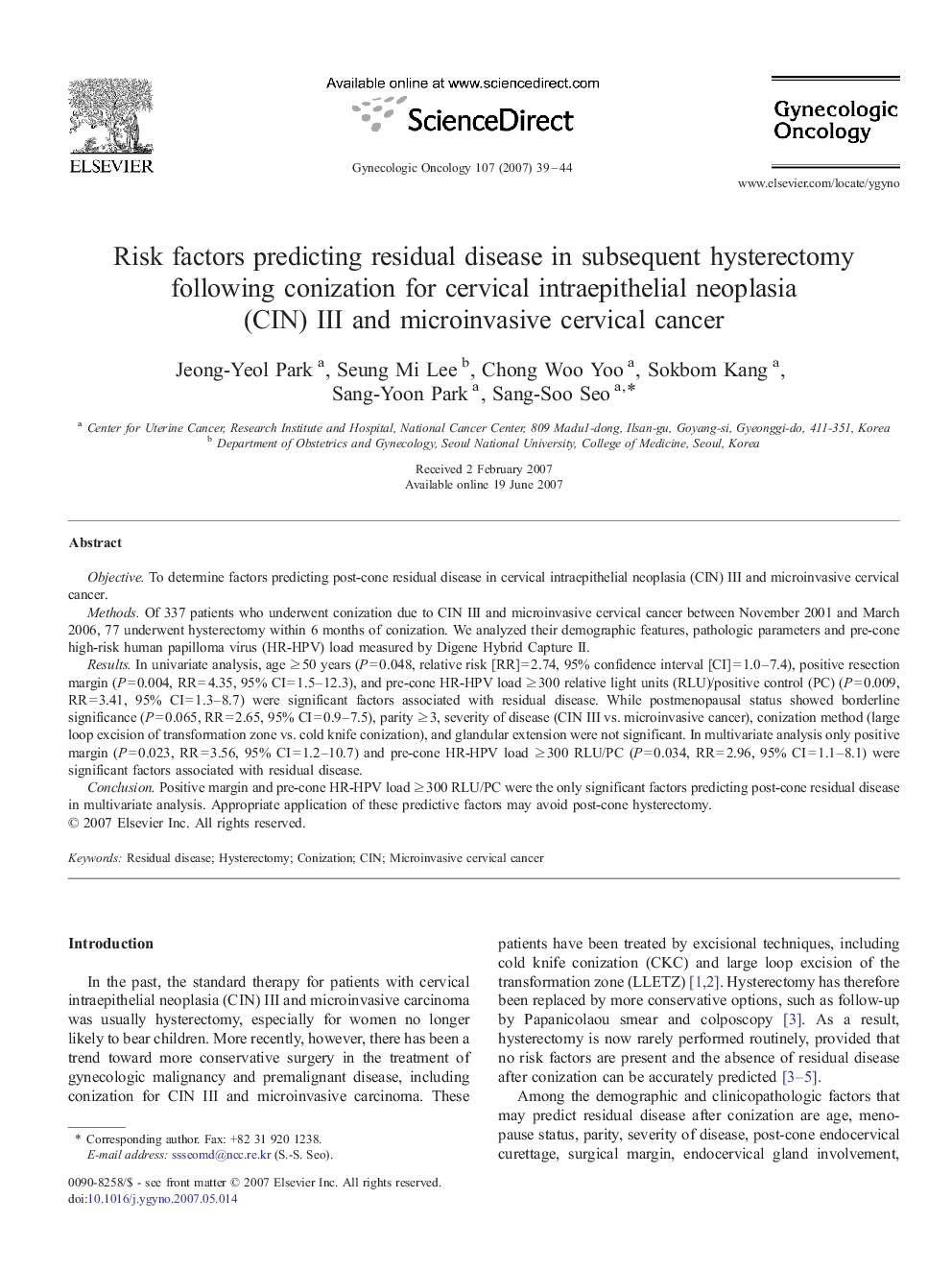| Article ID | Journal | Published Year | Pages | File Type |
|---|---|---|---|---|
| 3946259 | Gynecologic Oncology | 2007 | 6 Pages |
Objective.To determine factors predicting post-cone residual disease in cervical intraepithelial neoplasia (CIN) III and microinvasive cervical cancer.Methods.Of 337 patients who underwent conization due to CIN III and microinvasive cervical cancer between November 2001 and March 2006, 77 underwent hysterectomy within 6 months of conization. We analyzed their demographic features, pathologic parameters and pre-cone high-risk human papilloma virus (HR-HPV) load measured by Digene Hybrid Capture II.Results.In univariate analysis, age ≥ 50 years (P = 0.048, relative risk [RR] = 2.74, 95% confidence interval [CI] = 1.0–7.4), positive resection margin (P = 0.004, RR = 4.35, 95% CI = 1.5–12.3), and pre-cone HR-HPV load ≥ 300 relative light units (RLU)/positive control (PC) (P = 0.009, RR = 3.41, 95% CI = 1.3–8.7) were significant factors associated with residual disease. While postmenopausal status showed borderline significance (P = 0.065, RR = 2.65, 95% CI = 0.9–7.5), parity ≥ 3, severity of disease (CIN III vs. microinvasive cancer), conization method (large loop excision of transformation zone vs. cold knife conization), and glandular extension were not significant. In multivariate analysis only positive margin (P = 0.023, RR = 3.56, 95% CI = 1.2–10.7) and pre-cone HR-HPV load ≥ 300 RLU/PC (P = 0.034, RR = 2.96, 95% CI = 1.1–8.1) were significant factors associated with residual disease.Conclusion.Positive margin and pre-cone HR-HPV load ≥ 300 RLU/PC were the only significant factors predicting post-cone residual disease in multivariate analysis. Appropriate application of these predictive factors may avoid post-cone hysterectomy.
